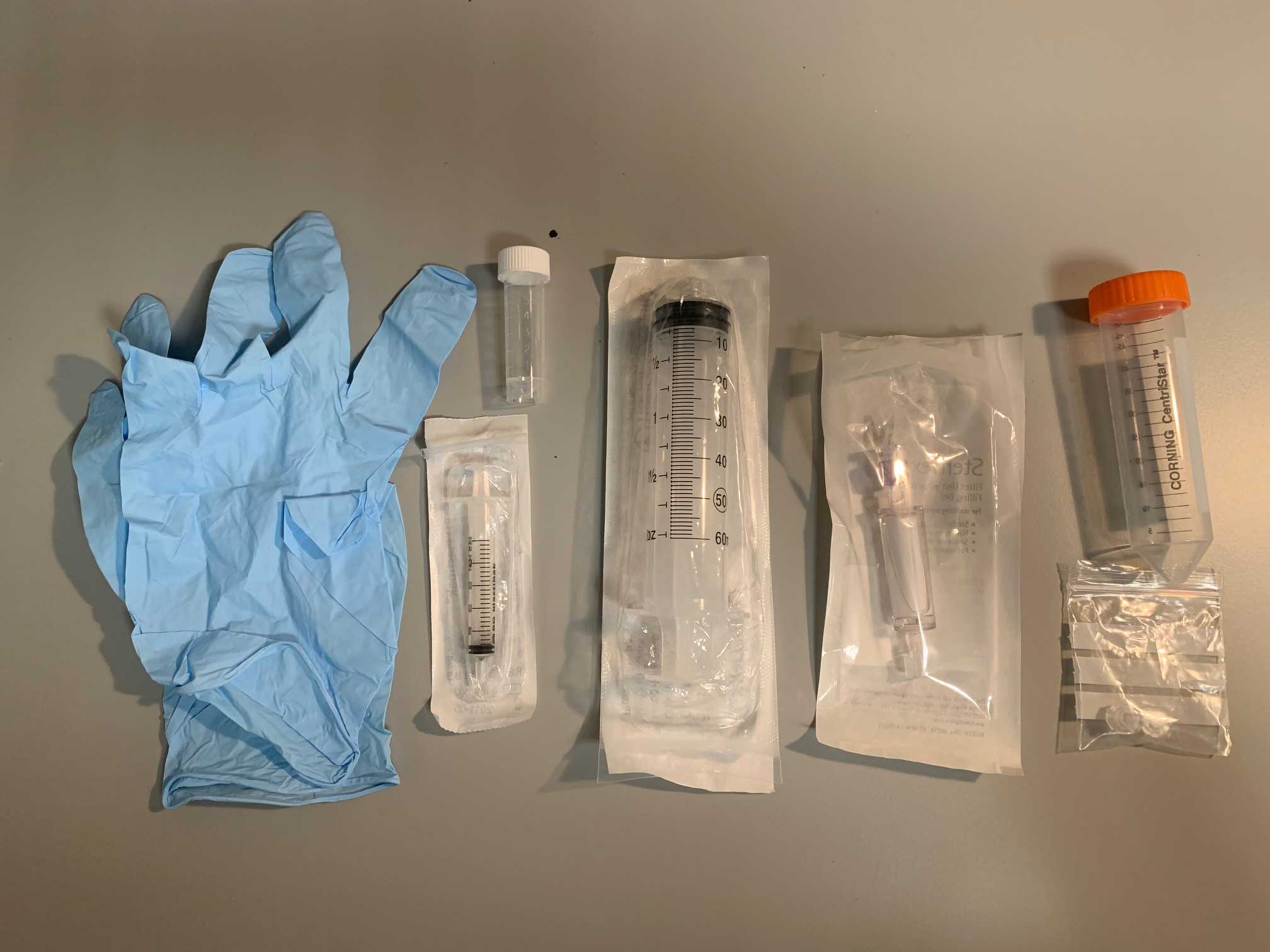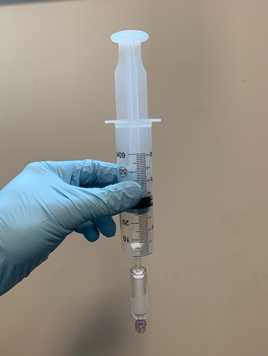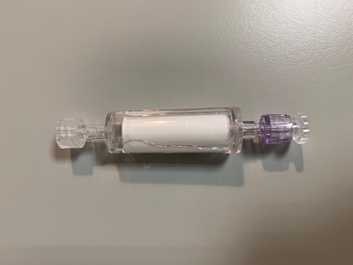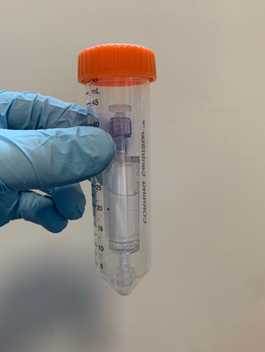Microbiome and eDNA sampling of water using Sterivex filters
Daniel S Read
Abstract
Protocol for field based sampling of bacterial biomass or environmental DNA (eDNA) using Sterivex filters and syringes.
Steps
Take the 60mL syringe and Sterivex filter out of the packaging.
Fill the syringe with 60mL of water to be sampled (either directly from the water source or collected in a clean sampling container that has been thoroughly rinsed with water from the sampling site).
Connect the syringe full of water to the luer lock end of the filter unit by twisting.
Refill the syringe and repeat this process until no more water can be filtered through the unit (a reasonable pressure can be applied, but be careful to not apply excessive force). Expect between 60mL and 600mL, depending on water turbidity.
Record the volume of water that passed through the filter in ml.
Fill the 60mL syringe with air, reattach to the filter unit and expel any remaining water in the filter unit by forcing the air through. Dispose of the 60mL syringe.
Add the end cap to the outlet of the filter unit by twisting it on.
Remove the 2.5mL syringe from its packaging and fill with Zymo DNA/RNA shield from the 5mL vial. Dispose of the empty vial.
Attach the 2.5 ml syringe to the inlet of the syringe filter and holding upright (syringe on top), add the Zymo DNA/RNA shield to the filter vial by depressing the syringe plunger. Allow the syringe to refill with air, remove and dispose of the empty syringe.
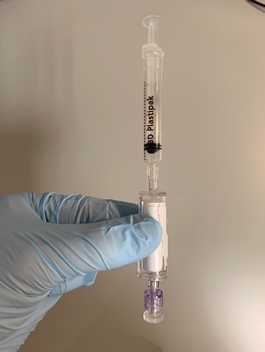
Store the filter unit at -20°C, or at the very least keep at 4°C and out of direct sunlight, until returning to the laboratory. Once in the laboratory, store at -20 °C until shipping and analysis.
Shipping of samples can be performed at room temperature, although cooled (4°C or -20°C shipping is preferred.
